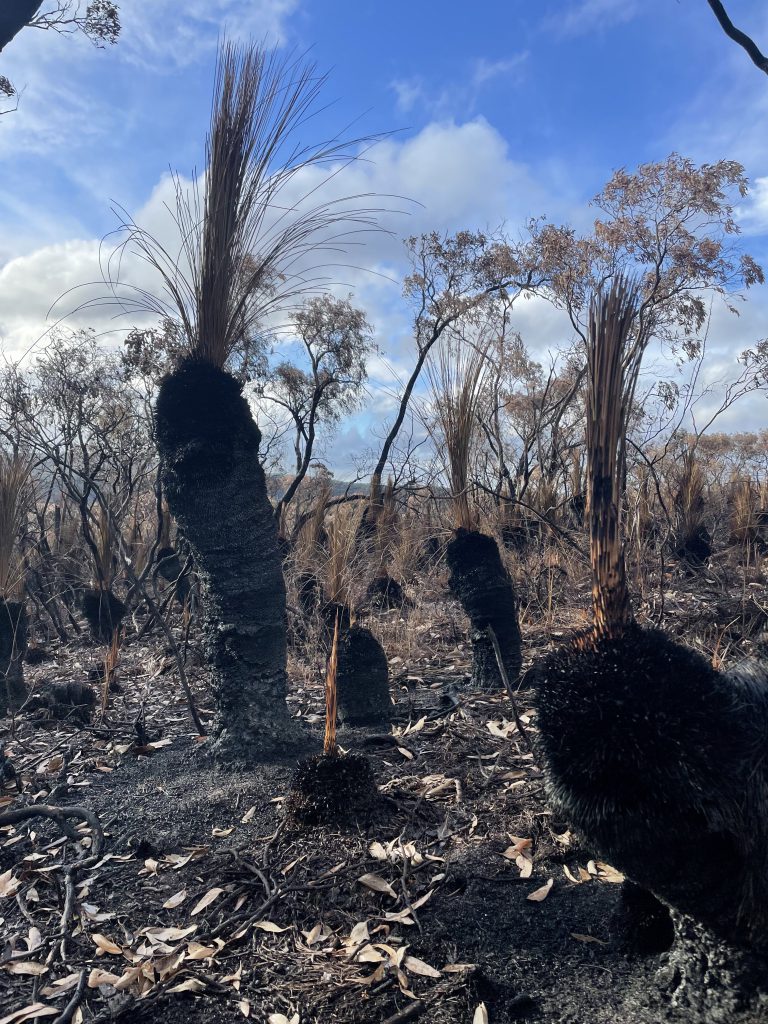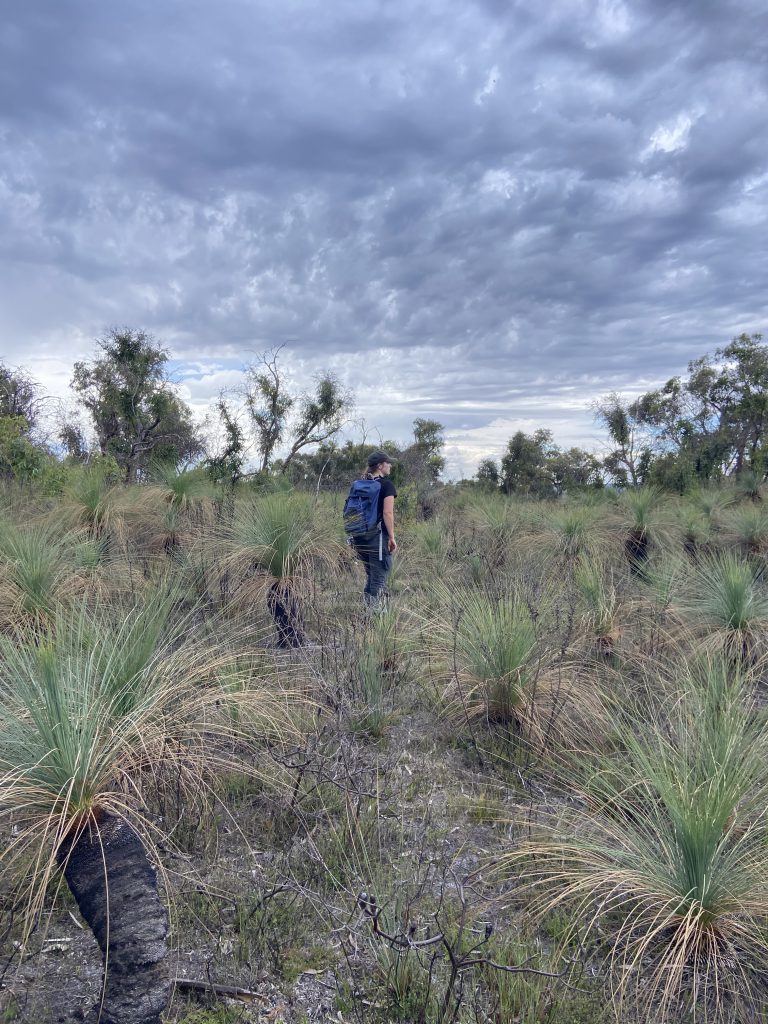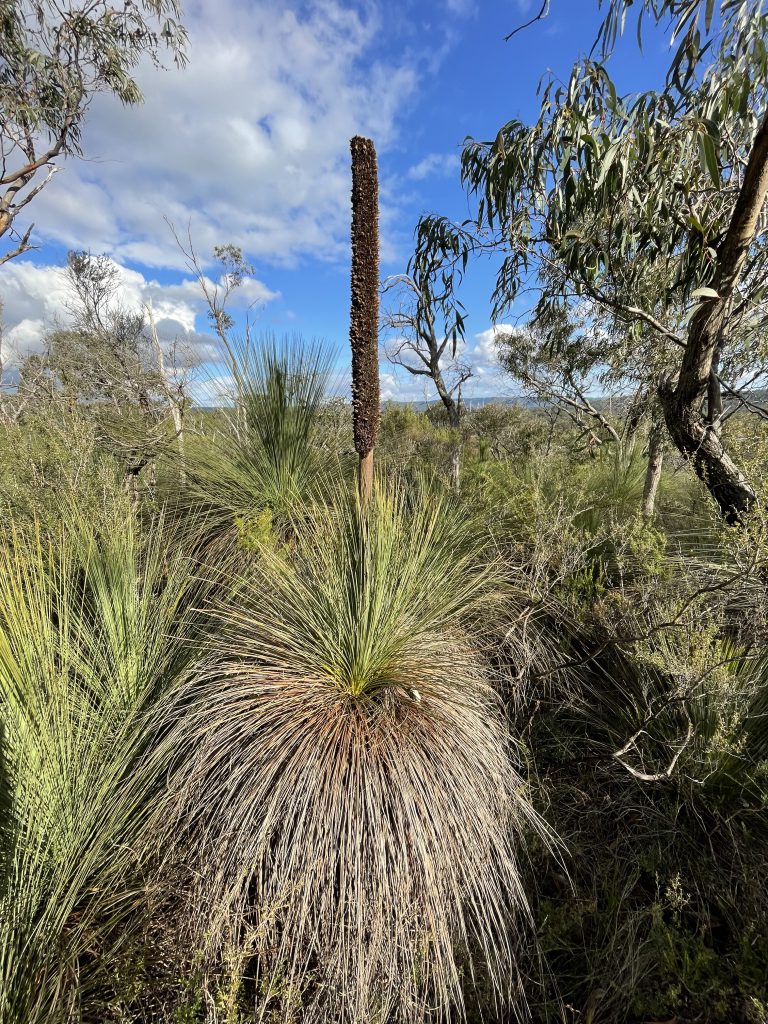Can fire be used to manage fuel and biodiversity in the Carlisle Heath?
Smoke on the horizon, temporary roadside signs, and even our Facebook feeds have begun to tell us that this year’s planned burns have commenced across the Otways.
But this year local researchers from the Conservation Ecology Centre will be working with Forest Fire Management Victoria to study whether winter burns can be beneficial for our native plants, as well as reducing the risk of wildfire.
Supported by funding from the Ian Potter Foundation, CEC Fire Ecologist Tamika Farley-Lehmer spent most of last November getting to know the plants of the Carlisle Heath intimately ahead of this season’s planned burns – counting and recording every plant within 2 meters at 160 different locations to get a baseline of the number and type of plants that occur there.
“All up we counted 69 different species of plants at our sites in the Carlisle, including iconic species such as Grass Trees (Xanthorrhoea australis) and Button Grass (Gymnoschoenus sphaerocephalus),” says Tamika. “We also made some really interesting observations about how several plants had reacted to past fires.”
“For example, a mass flowering of grass trees occurred across the burn scar of a 2020 wildfire, but they weren’t flowering to the same extent within the area burnt by a planned burn in the same year. And in a similar vein, we saw Rosy Hyacinth Orchids flowering across the burnt landscape, but not showing the same mass flowering events in areas that were not recently burnt.”
“So, what was it about these burns that encouraged the orchids to flower? Why did only the wildfire encourage the grass trees to spring to life? Why were neither species flowering in areas that weren’t burned? Do they need fire to flower? If so, how often? And what do all the other plants and animals that also live there need?”
These observations are just the tip of the iceberg when it comes to how our native plants respond to fire and highlight just how complicated it is to work out what fire regime – that is frequency and intensity of fire – is best for an ecosystem.
Over coming months, the Conservation Ecology Centre will be monitoring the response of native plants to several winter burns across the Carlisle, to see whether these burns affect the composition or diversity of species present within the burnt area.
Longer term, they hope to discover whether winter burns help make the ecosystem healthier (as some have hypothesised they might) and whether these burns also achieve the required level of fuel reduction.
“What we want to know is whether there is a threshold or logical point at which we can successfully manage and reduce fuel loads whilst, balancing the needs of flora and fauna species”, says Tamika. “For example, only eliminating 40% of fuel hazard rather than 70%, but still reducing the risk of wildfire by 50% and promoting ecosystem function.”
“There is no question that these ecosystems need fire, but the question is how much fire, and when, to provide the most benefit both to these ecosystems as well as deliver the fuel reduction and asset protection these programs are intended to achieve,” says Tamika.


